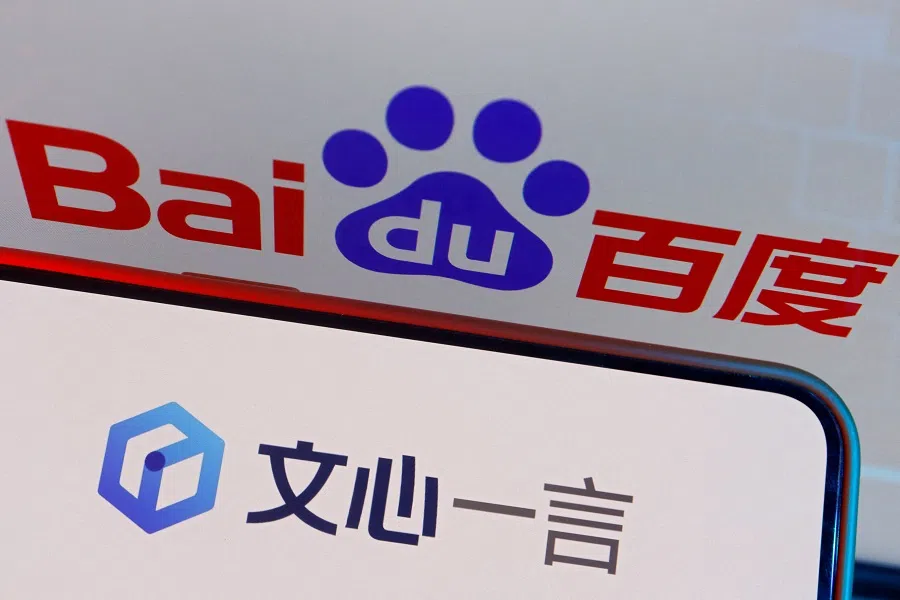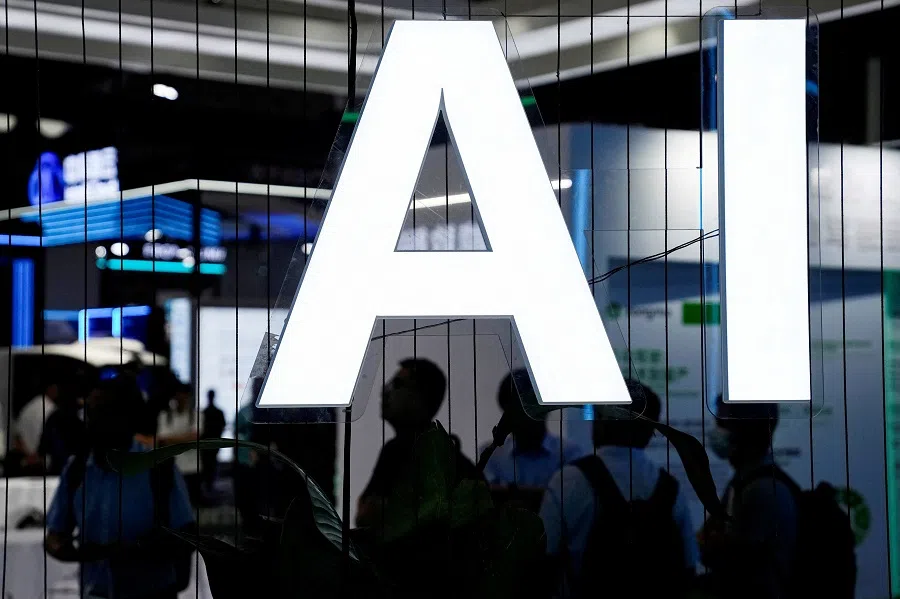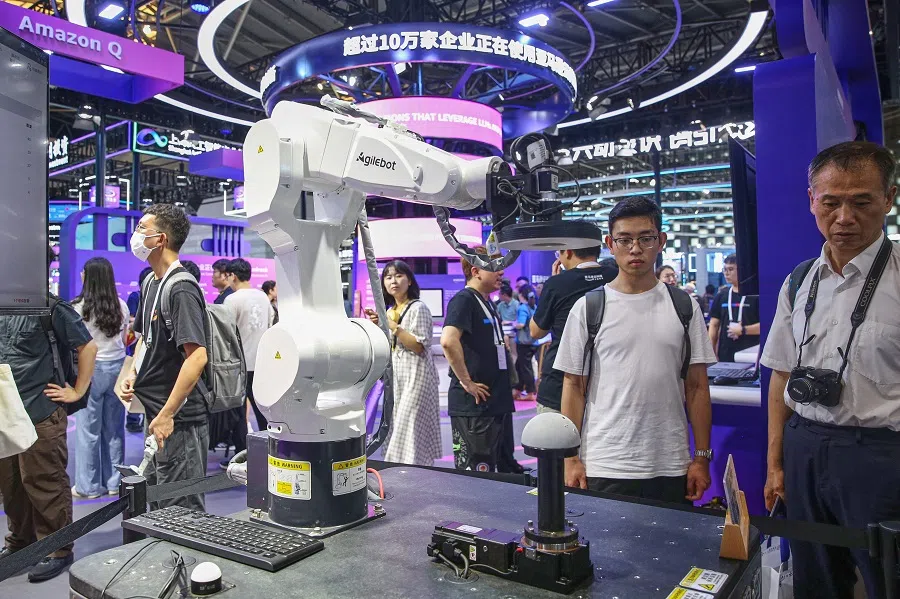OpenAI’s block will spur AI with Chinese characteristics
While worrying, OpenAI’s announcement that it would halt China’s access to its AI tools and software could spur localised AI development. Lianhe Zaobao’s Daryl Lim reports.

US artificial intelligence (AI) giant OpenAI’s announcement to block users in China and other regions from accessing its AI tools and software has sparked widespread concern in the Chinese tech community. Interviewed experts believe that this will lay the foundation for a “great reshuffle” in China’s AI industry, signalling a growing divergence in the AI ecosystem between China and the US.
Little impact on end-user experience
OpenAI announced in late June that from 9 July, the company will be restricting access in China to its application programming interface, prohibiting Chinese users and developers from accessing its large language model (LLM). Although OpenAI is officially not available in China, many developers access it through virtual private networks or other channels.
An intense battle for customers ensued after the news broke. Several Chinese LLM developers including Baidu, Tencent and Alibaba swiftly responded with free migration services for affected enterprises and developers. Some even seized the opportunity to cut prices and lower the threshold for enterprises to use LLMs.
“Ultimately, the restrictions will not have a huge impact on customer service.” — Associate Professor James Pang, NUS Business School
James Pang, an associate professor at the NUS Business School at the National University of Singapore (NUS) and co-director of NUS Business Analytics Centre, told Lianhe Zaobao that while these alternatives fall short of OpenAI in terms of performance, they still have the advantage of seamless integration with homegrown applications and solutions.

He said, “OpenAI’s existing business users can easily switch to China’s LLM platforms and can even directly use the open source platform to continue their operations. Ultimately, the restrictions will not have a huge impact on customer service.”
OpenAI is the developer of ChatGPT, a chatbot that took the world by storm in late 2022. The emergence of ChatGPT attracted widespread attention in China, with many tech enterprises launching their own LLMs one after another over the past year, staging a “war of a hundred models” (百模大战).
According to the Cyberspace Administration of China’s website, 117 homegrown LLMs have been approved for public release by Chinese authorities as of March 2024.
Weeding through real and fake AI enterprises
Due to OpenAI’s first-mover advantage in LLMs, many tech companies prefer using its products for model training in the early stages of building their own model. However, developing a comprehensive in-house model is not something that can be achieved overnight, not to mention the massive funds it requires.
To quickly launch AI products or services, some enterprises with limited funds employ a “shell” strategy to repackage and rebrand OpenAI as their own, promoting their AI services under the guise of a self-developed LLM. In fact, all end-user interactions with these AI products are done through OpenAI.
“The restrictions would compel companies relying on rebranded LLMs to introspect and build genuine technological expertise. This is crucial for them to truly contribute to China’s AI development...” — Associate Professor Zhu Feida, School of Computing and Information Systems, SMU

Associate Professor Zhu Feida of Singapore Management University (SMU)’s School of Computing and Information Systems pointed out in an interview that the value of these repackaged LLMs is not high and that OpenAI’s restrictive measures in fact accelerate the process of survival of the fittest within China’s AI industry, such that some “fake LLM developers” and enterprises lacking independent research and development will be eliminated.
He said, “This actually helps the Chinese government differentiate the real AI enterprieses from the fake ones.”
As the China-US tech rivalry continues, restrictive measures will only pose a greater threat in the future if these companies were to continue growing.
Zhu stated, “The restrictions would compel companies relying on rebranded LLMs to introspect and build genuine technological expertise. This is crucial for them to truly contribute to China’s AI development, which is not only a commercial endeavour but also a strategic and political effort leveraging the nation’s strength.”
China catching up just a matter of time
OpenAI’s restrictive measures are in line with US technological pressure on China to hinder its access to the most advanced AI and chip technology. A few days before OpenAI’s announcement, the US Treasury proposed regulations to strengthen the supervision of US businesses investing in China’s AI sector.
Zhu pointed out that strategically, OpenAI’s restrictions aim to hinder China’s training of AI LLMs, similar to how the US has imposed export restrictions on advanced AI chips to hamper China’s development of AI computing power.
“... the US’s power supply will soon be stretched to its limits. In contrast, China has the advantage in electric power development, especially in the fields of new energy power generation...” — Zhu

However, Zhu pointed out that AI computing power is not only reliant on the chip, but also depends on a stable supply of energy. With AI technology constantly improving and the fields for application continually expanding, the issue of high power usage for LLM technology is increasingly pronounced, and the supply of power has become a key limiting factor of AI development.
According to US media reports, ChatGPT could use more than 500,000 kilowatt-hours of electricity each day to satisfy the requests from over 200 million users, which means that it consumes 17,000 times more electricity than that of the average household.
Zhu opined that in accordance with the speed of AI development, the US’s power supply will soon be stretched to its limits. In contrast, China has the advantage in electric power development, especially in the fields of new energy power generation as well as a comprehensive technology and supply chain for battery energy storage.
Zhu added, “Although China currently cannot compete with the US when it comes to AI computing power, it is only a matter of time and an accumulation of experience before it catches up. China’s advantage in new energy power generation will be increasingly prominent in the coming stages of AI development; there could be a situation where the strengths of each cancel the other out.”
With increasingly more Chinese AI firms pivoting from OpenAI to Chinese models, there would be a more noticeable growing trend of AI localisation. — Lim Tern Poh, former Associate Director, AI Singapore
Increasingly differentiated ecosystems
Lim Tern Poh, former associate director at AI Singapore, said when interviewed that the fundamental technology used in building LLMs is similar globally, and that there are no technical barriers that cannot be overcome, with the key difference lying in how these models are fine-tuned to reflect local perspectives and values.
Lim added that OpenAI’s models tend to align more with Western viewpoints, while Chinese models are tailored to local cultural norms and values. With increasingly more Chinese AI firms pivoting from OpenAI to Chinese models, there would be a more noticeable growing trend of AI localisation.

Lim stated, “This presents both challenges for collaboration and opportunities for innovation, underscoring the importance of developing AI technologies that are not only advanced but also culturally relevant to their target markets.”
NUS’s Pang felt that the development of AI localisation meant that the application ecosystem will become increasingly differentiated globally, especially between China and the US. But he also stressed that this is similar to the current regionalisation of the mobile application ecosystem, with each country’s field of application having its unique elements.
He stated that the development of AI technology is still in its early stages, and the worsening geopolitical situation would pose a challenge to the effective supervision of AI; countries need to maintain collaboration and exchanges in order to minimise risks.
This article was first published in Lianhe Zaobao as “中国AI行业“大洗牌”迈向本土化”.




![[Big read] China’s 10 trillion RMB debt clean-up falls short](https://cassette.sphdigital.com.sg/image/thinkchina/d08cfc72b13782693c25f2fcbf886fa7673723efca260881e7086211b082e66c)
![[Big read] Love is hard to find for millions of rural Chinese men](https://cassette.sphdigital.com.sg/image/thinkchina/16fb62fbcf055b710e38d7679f82264ad682ce8b45542008afeb14d369a94399)